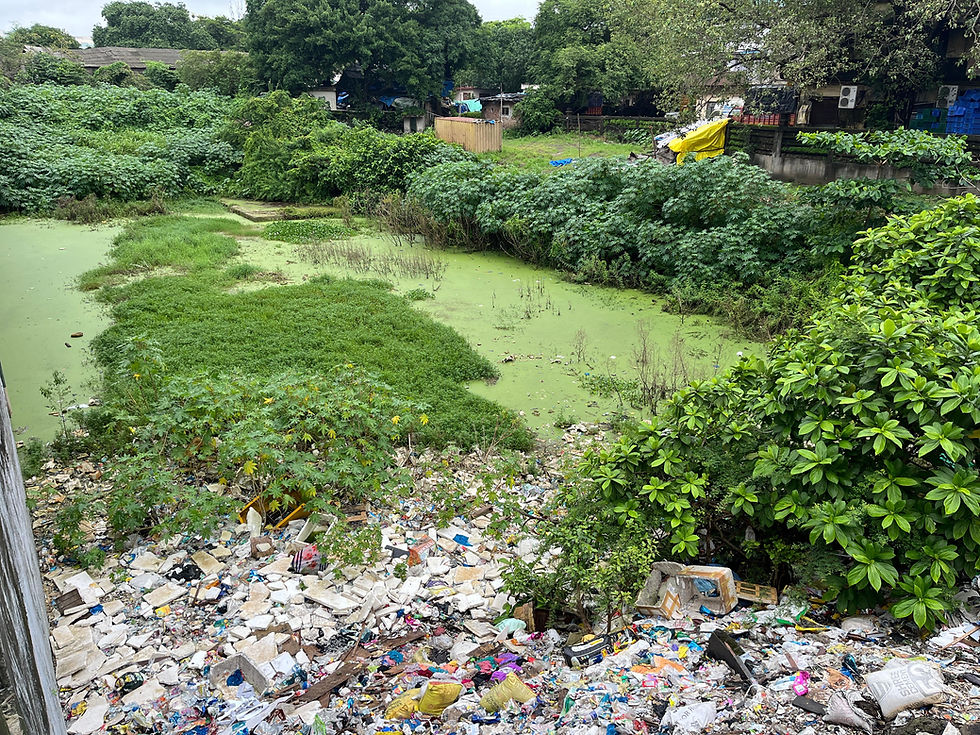Power to the People – Affordable Clean Energy Alternatives
- Gully Classes Foundation

- Aug 11
- 3 min read
One evening in Mumbai, I had dinner with some friends at a local restaurant, when suddenly the lights turned off. The owner turned all the fuse switches on and off, but nothing changed and it remained dark. We turned on our phone flashlights and when looking outside, we saw that the street lighting had gone dark, too. So the problem was not a dead fuse in the restaurant, but we had just experienced our first power outage in Mumbai. It reminded me that a reliable and stable electricity grid is still not guaranteed for everyone - and it made me think more about where the energy we use here in Mumbai comes from.

India still gets over 70% of its electricity from coal, one of the dirtiest energy sources. While the country is investing heavily in renewables, coal still dominates due to availability and infrastructure. This has serious consequences like air pollution and CO₂ emissions, which are a central reason for climate change. The coal reliance leads to a daunting statistic: India is the third-largest CO₂ emitter globally, after China and the US. In Mumbai a main source of energy is the Trombay Thermal Power Station run by Tata Power. It is Mumbai’s oldest and largest coal plant at 930 MW, capable of running day and night. In the monsoon season, an important source of electricity is supplied via the Maharashtra grid from state-owned hydro plants like those at the Koyna Dam. It provides clean but limited energy, depending on rainfall. Solar and wind power only provide a small portion of the city’s energy mix. A field where Mumbai is trying to turn a problem into an opportunity is its waste. The project is still in pilot stages, but the city has been planning waste-to-energy plants. At the moment, the undertaking is facing challenges in segregation and infrastructure and is therefore not a significant source yet. Power to the People – Affordable Clean Energy Alternatives.
Mumbai is a city of high living costs and electricity bills are a major cost for many families. And since power cuts still happen, especially in informal settlements, some people rely on kerosene or diesel generators, which are expensive and polluting. Now, what can you do to lower your dependence on the unreliable grid and lower your electricity bill, while also promoting clean energy? The best option is rooftop solar panels. Mumbai, in general, has a high solar potential, meaning the city receives a great amount of sunlight, making solar panels viable. There is, of course, seasonality, with Monsoon season bringing heavy clouds, rain, and shorter sunlight hours. Solar generation can drop by 30–50% during the monsoon months, but seen on an annual basis, solar panels are still a great option. Recent years have also seen a massive drop in the cost of solar panels, especially driven by manufacturers in China. But India has its own big players in this field, with the omnipresent conglomerates Tata and Adani both playing a role. Locally produced panels mean lower costs, fewer import dependencies and a smaller carbon footprint. There might also be state subsidies available. A grid-tied system is most common in cities like Mumbai. This means your home remains connected to the main electricity grid, but during the day, the solar panels generate electricity to power your lights, fans, appliances, and other needs. If the system generates more power than you use, the extra electricity is fed back into the grid, and you get a credit on your electricity bill, a process called net metering. At night, or during very cloudy days, when the panels aren’t generating enough electricity, your home automatically draws electricity from the grid as usual. Daily life with solar doesn’t feel much different, but your electricity bills start shrinking and many households recover their investment in 5 to 7 years. For low-income households or community rooftops, some government programs or NGO partnerships are beginning to offer shared solar models, where a cluster of homes benefits from a single installation. This way, even people without private roof space can benefit from cleaner, cheaper energy.
Clean energy is not just about saving the planet; it is about giving people power, literally and figuratively. In a city where every rupee counts and every watt matters, solar energy can be a smart, sustainable way forward.






Comments